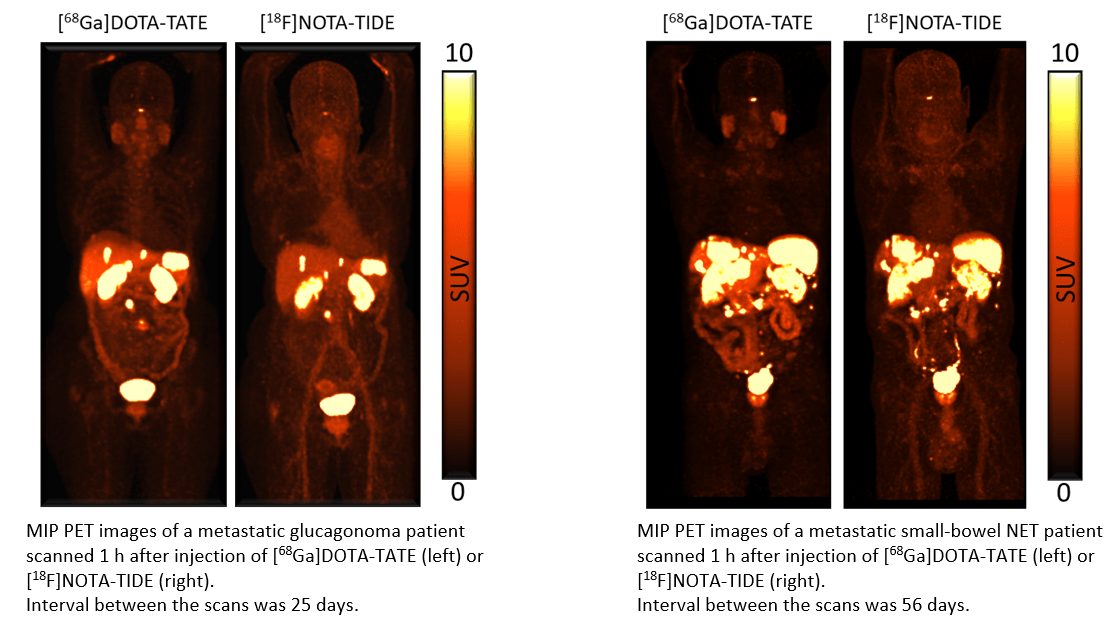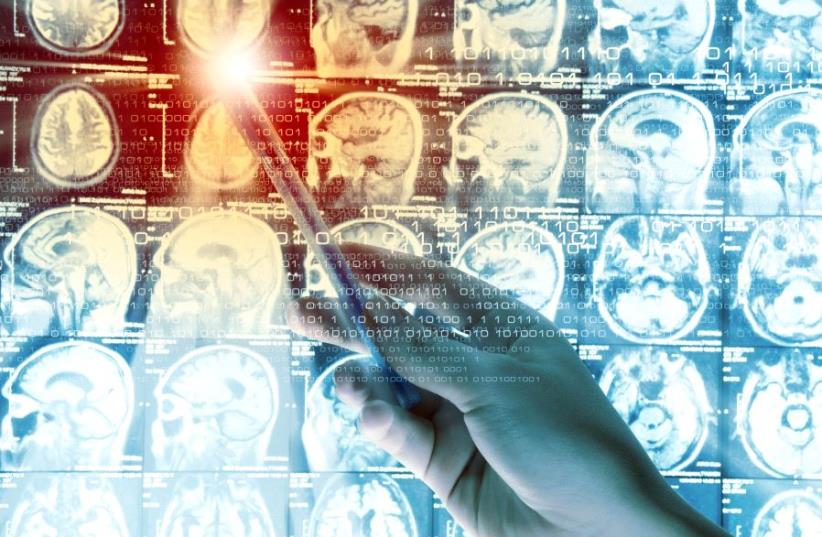הנשא (טרנספורטר) לנוראפינפרין/ נוראדרנלין (NET: norepinephrine transporter) הינו חלבון, המעוגן בממברנת תאי עצב נוראדרנרגיים במערכת העצבים ובתאי כרומפין של יותרת הכליה, ואחראי על הכנסה של נוראפינפרין לתוך התא. מספר גידולים ממקור הרכס העצבי, ובפרט גידולים מסוג neuroblastoma, pheochromocytoma ו- paraganglioma מאופיינים לעיתים קרובות בביטוי גבוה של ה-NET.
metaiodobenzylguanidine (mIBG) הינו אנלוג מבני של נוראפינפרין, ומזה כ- 40 שנה, mIBG מסומן ביוד-123 או ביוד-131 (123/131I-mIBG) משמש לדימות (imaging) ולטיפול בגידולים, המבטאים את ה- NET, בהתאמה.
מחקרים עדכניים מצביעים על כך ש- 18F-mFBG, אנלוג מבני של mIBG המצומד לאיזוטופ פלואור-18 ומאפשר דימות PET, מהווה חלופה עדיפה על 123I-mIBG לצורך דימות מולקולרי של ה- NET בכלל, ובפרט של גידולים, המבטאים נשא זה2-8.

מבנה כימי של 18F-mFBG ושל 123I-mIBG
יתרונות 18F-mFBG לעומת 123I-mIBG:
- רזולוציה גבוהה יותר של PET בהשוואה ל- SPECT, המובילה לשיפור בזיהוי נגעים קטנים
- פינוי מהיר יותר², המאפשר דימות בזמן מוקדם יותר לאחר ההזרקה וכן פוטנציאל למנת קרינה נמוכה יותר2-9
- אין צורך במתן מוקדם של תמיסת יוד רוויה לצורך "חסימת" בלוטת התריס
- זמן סריקה קצר יותר
- אפשרות לסיים התהליך ביום אחד
- Pandit-Taskar N. et al. J. Nucl. Med. 2017;58: 39S-53S
- Pandit-Taskar N. et al. J. Nucl. Med. 2018;59(1), 147-153
- Pauwels E. et al. Q J Nucl Med Mol Imaging. 2020; 64(3):234-249
- Pauwels E. et al. Eur J Nucl Med Mol Imaging. 2021; 48(1):313–315
- Pauwels E. et al. Eur J Nucl Med Mol Imaging. 2023; 50(4):1134-1145
- Samim A. et al. Eur J Nucl Med Mol Imaging. 2023; 50(4):1146-1157
- Wang P. et al. Clin Nucl Med. 2023; 48: 43–48
- Wang P. et al. Eur J Nucl Med Mol Imaging. 2023; 50(10):3097-3106
- Bombardieri et al. Eur J Nucl Med Mol Imaging. 2010; 37:2436–2446
/





